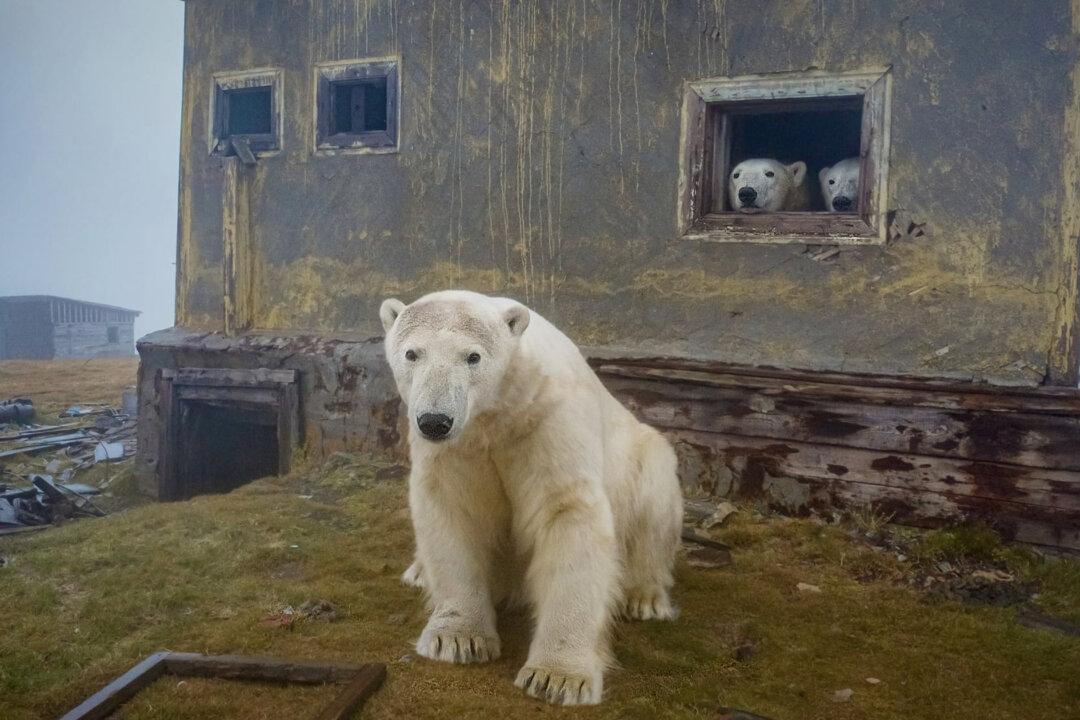Like pale ghosts, a pack of white polar bears haunt a dilapidated, abandoned Soviet weather station on a small island in Russia’s Arctic far east.
This sleuth of spooky bears might have gone unnoticed on Kolyuchin Island had David Kokh, a 41-year-old Moscow-based photographer, not set sail on his long-awaited voyage to Wrangel Island last September. He shared how the remarkable encounter, and subsequent photoshoot of a lifetime, transpired.






